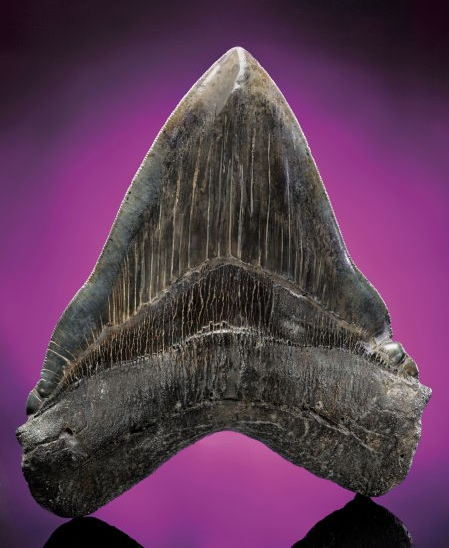
COLUMBIA, S.C. (AP) – Cars and trucks were pulling in one behind the other along the country roads to Four Holes Swamp. In the tidal Edisto River miles downstream, the same commercial scuba boats kept coming back to the same spots. State wildlife officers wanted to know why.
That’s what led to a crackdown on illegal underwater collecting of fossil sharks’ teeth, spear points, shipwreck and Civil War pieces, as well as other historic and prehistoric artifacts. Since 2015, the S.C. Department of Natural Resources has cited 19 people for collecting without a license. The charges are misdemeanors.
The officers found collectors using rakes and shovels, and in at least one case a screen like you’d use to separate gold flakes panned from a stream. And it wasn’t just for fun. At least a few of the collectors were looking to profit. A premium fossil sharks’ tooth can be worth more than $1,000 on the trade market.
“People were actually wading the river, collecting by hand,” said Capt. Lee Ellis of the state Department of Natural Resources.
Collecting fossil teeth from any number of shark species that once haunted the Lowcountry is a pastime for hundreds. Collectors comb exposed beaches and shoals at low tide, or dive inshore and offshore. The teeth, of all sizes, are left from a time when the region was under the ocean, washed into the beds as sea levels retreated.
To this day, currents pick up the fossils and toss them out along the bottom. They can be found everywhere and are so plentiful in gravel beds that a spot stripped clean one year will be full of teeth the next.
State law allows collecting a “reasonable amount” of the artifacts but doesn’t specify what that amount is. Collecting in the water below the low water mark requires a hobby license and it’s illegal to dig for them.
Archaeologists have long frowned on the practice. The waters are public grounds and that prize tooth as big as an ax head could be from a creature like a 2 million-year-old Megalodon, the biggest shark and the biggest predator ever known to exist, estimated to have been at least twice as large as the largest great white.
Even pieces of a potential skeleton left in situ, or where they were found, could be invaluable to researchers. Divers are required to make quarterly reports of their finds, including location and other information.
The numbers and intensity of the people collecting jumped in the dry months before the 2015 flood, and DNR officers began to work closer with the S.C. Institute of Archaeology and Anthropology to enforce the complex state Underwater Antiquities Act.
“Illegal collection of both fossils and artifacts often leads to destruction of important archaeological sites, unique paleontological specimens and sensitive marine habitat,” said Jessica Irwin, institute maritime archaeologist. “We have been aware of this problem but have received an increased number of calls and emails from concerned citizens. This concern may stem from an increased awareness or from increasingly aggressive tactics of illegal collectors.”
The institute monitors the divers’ quarterly reports, occasionally asks for a donation of the find, or to make a cast of one. If a historic or prehistoric find is striking enough, staff will ask the diver to lead them to it. But the state releases the property title to the diver after a required report is reviewed, as long as there’s a permit.
The stepped-up attention and enforcement has been raising hackles among collectors used to going at it largely unnoticed and left alone. But it followed a few years of word that it was coming, said Johnny Cercopely of Cooper River Diving. He advises anyone booking with him to have a license.
“It’s good that they do it and how they do it is pretty fair,” he said.
Particularly when it comes to relatively intact fossil skeletons, “it’s better have an archaeologist step in than somebody with a hammer knocking at it.”
___
By BO PETERSEN
The Post and Courier
Information from: The Post and Courier, http://www.postandcourier.com
Copyright 2016 Associated Press. All rights reserved. This information may not be published, broadcast, rewritten, or redistributed.


